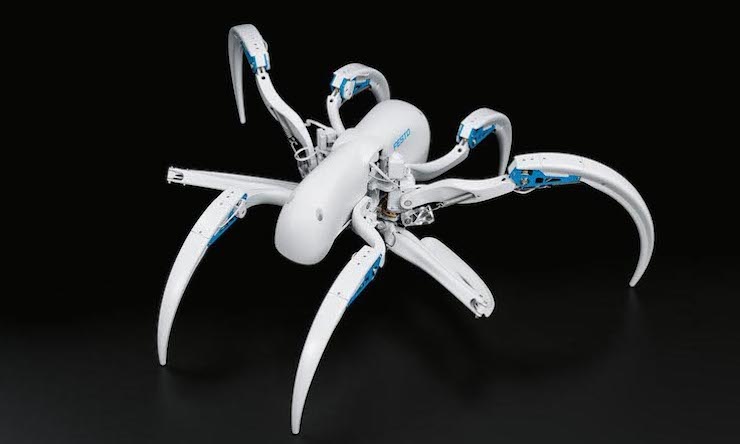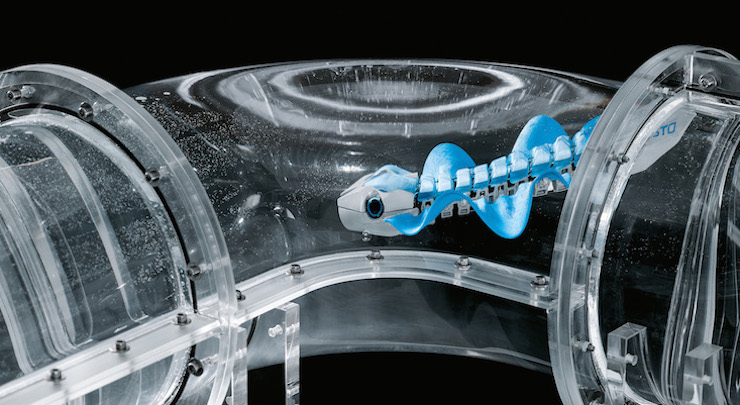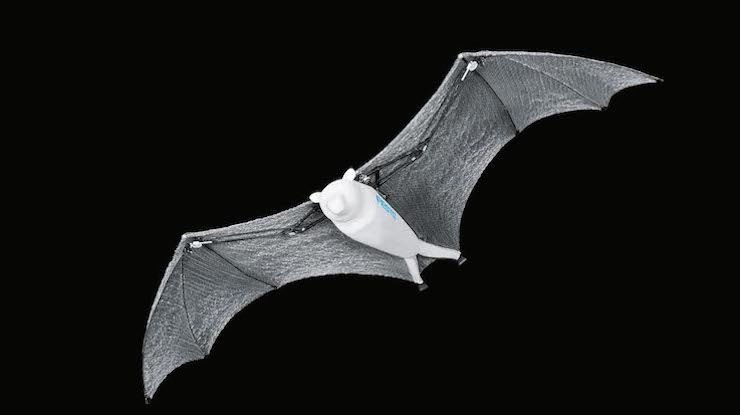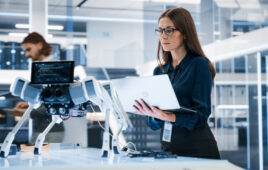Robotics is undoubtedly one of the most exciting and fastest growing areas of technology. Each year more and varied robots are being used in applications from industrial to consumer uses and beyond. In addition to controllers and motion components such as motors and actuators, sensors play a vital role in robotic operation by providing data about the robot’s environment.
Case in point: the latest bionic robots from Festo. The company’s Bionic Learning Network earlier this year released new biomimicry innovations to support ongoing research in engineering, manufacturing, and materials science drawn from natural systems. The new bionic robots include a transforming spider, a robotic fish and a semi-autonomous flying bat.
Spider-like robot rolls uphill
The biological model for the BionicWheelBot is the flic-flac spider, a species that lives in the Erg Chebbi desert on the edge of the Sahara. Just like living flic-flac spiders, the Festo BionicWheelBot propels itself with a tripod gait using six of its eight legs to walk. To start rolling, the BionicWheelBot bends three legs on each side of its body to form a wheel. Two lower-middle legs are folded up during walking then extend and push the rolled-up spider off the ground to propel it forward. An inertial sensor lets the robot track its current pose so it accurately times its next push-off sequence. The robot rolls faster than it walks and can roll up a 5% incline.
Just like the flic-flac spider it’s modeled on, the Festo BionicWheelBot propels itself with a tripod gait using six of its eight legs to walk.
Deft underwater navigation by soft-finned robot
For the 15-oz BionicFinWave, the Festo bionics team found inspiration in the undulating fin movements of marine animals such as the polyclad and cuttlefish. Its propulsion mode lets the underwater robot autonomously maneuver through water-filled acrylic tubing. Swimming autonomous robots such as the BionicFinWave could eventually find practical application in inspection, measurement, and data acquisition in water, wastewater, and other process industries. Knowledge gained in this project could also find use in the manufacture of soft-robotics components.
Undulation forces from longitudinal fins also let the BionicFinWave maneuver itself forward or backward. The fin drive unit is particularly suitable for slow and precise motion and causes less turbulence in the water than conventional screw-propulsion drives. While it moves through tube systems, the robot also communicates via radio to share temperature and pressure sensor readings to nearby I/O.
The BionicFinWave’s two lateral fins are molded from silicone and can move independently to generate different wave patterns (or swim in a curve). The BionicFinWave moves upwards or downwards by bending its body in the target direction. Integrated crankshafts, joints, and piston rod are 3D printed from plastic. Other geometrically complex components are also 3D printed, which helps keep weight down. Pressure and ultrasound sensors constantly register the BionicFinWave’s distance to the walls and its depth in the water, which prevents collisions with the tube system. This autonomous and safe navigation needed the development of compact, efficient, and waterproof or water-resistant components that can be coordinated and regulated by means of appropriate software.
Flying robot uses machine learning to choose flight path
To emulate the flying fox, among the world’s largest bats, the wing kinematics of the BionicFlyingFox are divided into primaries and secondaries with all the joints in the same plane. To let the BionicFlyingFox move semi-autonomously within a defined space, the robot communicates with a motion-tracking system, which in turn plans the flight paths and issues commands.
Starting and landing are performed by a human operator, then an autopilot takes over during flight. Pre-programmed flight routes stored on a computer specify the path taken by the 20.5-oz (580-g) BionicFlyingFox as it performs its maneuvers. The wing movements needed to effectively implement the intended movement sequences are calculated by its on-board electronics. The BionicFlyingFox optimizes its behavior during flight and follows the specified courses more precisely with each circuit.
A membrane covering the skeleton was specially developed by the bionics team. It consists of two airtight foils and a woven elastane fabric, which are welded together at approximately 45,000 points. The fabric’s honeycomb structure prevents small cracks in the flying membrane from increasing in size. The BionicFlyingFox can thus continue flying even if the fabric sustains minor damage. Due to its elasticity, the flying membrane stays almost crease free even when the wings are retracted.
Filed Under: Sensors (pressure), Robotics • robotic grippers • end effectors, Motion Control Tips








Tell Us What You Think!